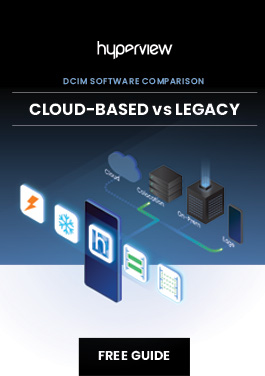Navigating the Complex Landscape of Hybrid IT Environments
Over the past decade, we have seen a massive shift in the IT landscape from traditional, on-premises infrastructure to a hybrid mix of data center models. These models combine on-premises data centers, colocation, edge data centers, and cloud services. While this hybrid IT model offers unmatched flexibility, scalability, and cost optimization, it also presents a complex management challenge.
In this blog post, we’ll dive into why these hybrid IT environments are more complicated to manage than traditional IT infrastructures and discuss some strategies for successful management.
The Increasing Complexity of Hybrid IT Environments
In a traditional IT setup, businesses managed their hardware, software, and networking components in a single location, making it easier to monitor, update, troubleshoot, and secure their systems. With all assets and control under one roof, IT teams had direct visibility and control over the entire infrastructure.
On the other hand, a hybrid IT environment combines various models:
- On-premises data centers: This is the traditional data center model where the organization owns and maintains its physical data centers.
- Colocation: This model involves renting space in a third-party data center to house servers and other hardware, sharing power, cooling, and network resources with other businesses.
- Edge data centers: These are smaller, localized data centers designed to reduce latency by processing data closer to the source or end-users.
- Cloud services: Here, businesses use computing resources provided over the internet by third-party providers like AWS, Google Cloud, or Microsoft Azure.
While each of these models has its advantages, their coexistence in a hybrid IT environment makes management more complex for a number of reasons:
Distributed control
In a hybrid IT environment, businesses lose some direct control over their infrastructure, particularly in areas managed by third-party providers such as colocation facilities and cloud services. This can make routine tasks like troubleshooting, patching, and upgrading more challenging. It also requires IT teams to manage relationships with multiple vendors, adding an additional layer of complexity.
Increased security concerns
With more distributed systems, there are more points of entry for potential threats. Ensuring data security across different locations and systems, each potentially having its own security protocols, adds to the complexity of managing hybrid IT environments.
Regulatory compliance
Meeting regulatory requirements becomes more challenging when data is spread across various environments, each with its own set of compliance considerations.
Interoperability
Ensuring smooth interoperability among these diverse systems can be a considerable challenge. Each system can have its own set of APIs, data formats, and protocols that need to be translated and synchronized to ensure seamless operation.
Mastering the Management of Hybrid IT Environments
Despite these complexities, the advantages of hybrid IT environments are worth the challenge. To manage these environments effectively, organizations can take several steps:
- Adopt robust management tools: Modern Data Center Infrastructure Management (DCIM) software offers sophisticated tools for managing hybrid environments. DCIM software provides a centralized platform to manage all aspects of a data center, from tracking resource usage to optimizing power and cooling. DCIM tools make far it easier for IT teams to manage and stay on top of their distributed resources.
- Invest in security and compliance: Given the enhanced risk of security breaches and non-compliance, businesses need to invest in advanced security measures and compliance tools. This can include next-generation firewalls, intrusion detection and prevention systems, and robust encryption methods.
- Training and skills development: As the complexity of IT environments increases with the adoption of hybrid models, so does the need for a broader and more diverse set of skills within the IT team. Effectively managing a hybrid IT environment requires expertise across multiple domains, including cloud management, network security, and compliance, among others. As a result, investing in continuous training and skills development for the IT team is of paramount importance.
- Define clear governance policies: Clear governance policies form the backbone of successful hybrid IT environment management. These policies dictate how the IT resources – both physical and virtual – are managed, accessed, and deployed across different data center models. They establish a framework that guides the IT teams in their daily operations, contributing to consistent performance, reduced risk, and enhanced regulatory compliance.
- Embrace automation: Automation, particularly when coupled with DCIM software, can be a game-changer in effectively managing hybrid IT environments. DCIM software provides automated asset discovery across on-premises data centers, colocation, edge, and cloud services. As well, the software delivers automated alerts for potential issues like hardware failures or capacity thresholds, enabling quick responses to prevent downtime.
While managing a hybrid IT environment can be more complicated than managing a traditional IT infrastructure, the benefits are significant. With the right tools, skills, and strategies, organizations can effectively navigate the complexities of hybrid IT environments and harness their full potential.
If you would like to learn more about the difference between SaaS and on-premises DCIM softwares, download this free guide.

The post Navigating the Complex Landscape of Hybrid IT Environments appeared first on Hyperview.
*** This is a Security Bloggers Network syndicated blog from Hyperview authored by Rajan Sodhi. Read the original post at: https://www.hyperviewhq.com/blog/navigating-the-complex-landscape-of-hybrid-it-environments/



